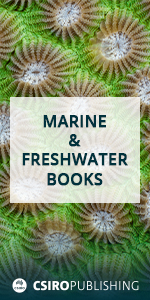Australian Journal of Zoology
Volume 63
Number 2 2015
The parasite assemblage of Liasis fuscus Peters, 1873 comprises three species of cestode, six of nematode, one pentastome and one protozoan, with a cestode, Bothridium ornatum, being the most prevalent. The helminth assemblage was depauperate, with neither season nor sex of host affecting abundance, but differences between ages of hosts and seasonal diversity were significant.
Photo by Eridani Mulder.
This study examined the population structure and genetic diversity of the two remaining metapopulations of Petrogale lateralis MacDonnell Ranges race in South Australia. The findings have implications for the management of in- and ex-situ populations of this race, and help advance our knowledge of rock-wallaby ecology.
Photo by Mick Post.
A survey of long-nosed (or New Zealand) fur seals (Arctocephalus forsteri) in South Australia in early 2014 led to an estimate of 20431 pups, 3.6 times greater than in 1990. The increase is attributed to recovery from 19th century overharvesting. Most pups were on Kangaroo Island where the trend will likely continue.
Photo by David Sinclair.
The Pygopodidae comprise an enigmatic group of legless lizards endemic to the Australo-Papuan region. Here we present the first complete mitochondrial genome for a member of this family, Aprasia parapulchella, from Australia.
Photo by David Wong.
Freshwater crayfish are often considered to be ecosystem engineers. We reveal, with underwater video, aggregations of Murray River crayfish feeding gregariously on patches of allochthonous material in an upland stream. We highlight that future research should investigate the role Murray River crayfish play in nutrient cycling in streams.
Photo by Brendan Ebner.
We characterised nine microsatellite loci for Pleistodontes imperialis sp. 1, the pollinator wasp of Port Jackson fig (Ficus rubiginosa). We found potential spatial sub-structuring within and between two natural populations. We show that most of these loci could be utilised for studies in two closely-related fig wasp species.
Photo by Timothy L. Sutton.
Freshwater mussels are among the most endangered groups of fauna worldwide. We modelled the distribution of Westralunio carteri and found salinity, perenniality and total nitrogen concentration as the most accurate predictor variables for the species’ presence. Salinisation led to a 49% reduction in extent of occurrence, qualifying the species as vulnerable.
Photo by David L. Morgan.
Describing the spatial requirements of animals is central to understanding their ecology. A total of 115 studies that describe the home ranges of Australian terrestrial vertebrates were reviewed. Many studies had various shortcomings, suggesting they had not fully described home ranges. Understanding what characterises best practice will improve future studies.











